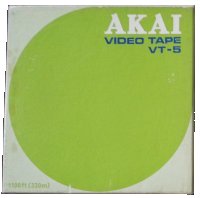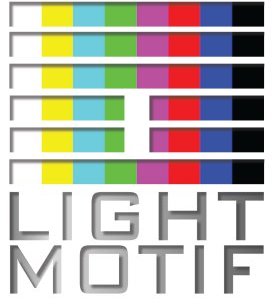|
|
|
These are some of the video tape formats we can transfer.
You can use this page to identify your tape, if needed, or just have a look at history!
Format |
Description |
Tape Picture |
1" C Format |
1 inch Type C (designated Type C by SMPTE) is a professional reel-to-reel analog recording helical scan videotape format co-developed and introduced by Ampex and Sony in 1976.
The quality and reliability of 1 inch Type C made it a mainstay in television and video production in television studios for almost 20 years, before being supplanted by more compact videocassette formats like Betacam, DVCAM, D-1, D-2 and DVCPro. 1 inch Type C was also widely used for the mastering of early LaserDisc titles. It was replaced in that role by the digital D-2 videocassette format in the late 1980s.
|
|
Betacam |
Betacam is a family of half-inch professional videocassette products developed by Sony in 1982. In colloquial use, "Betacam" singly is often used to refer to a Betacam camcorder, a Betacam tape, a Betacam video recorder or the format itself. All Betacam variants from (plain) analog recording Betacam to Betacam SP and digital recording Digital Betacam (and additionally, HDCAM & HDCAM SR), use the same shape videocassettes, meaning vaults and other storage facilities do not have to be changed, when upgrading to a new format. The cassettes are available in two sizes: S and L.
|
|
U-matic |
U-matic is a videocassette format first shown by Sony in prototype in October 1969, and introduced to the market in September 1971.
The videotape was ¾ inches (1.9 cm) wide, so the format is often known as 'three-quarter-inch' or simply 'three-quarter'.
|
|
Panasonic D3 |
D-3 is an uncompressed composite digital video tape format invented at NHK, and introduced commercially by Panasonic in 1991 to compete with Ampex's D-2.
|
|
VHS |
The Video Home System (better known by its abbreviation VHS) is a video tape recording standard developed during the 1970s by a Japanese company, JVC.
|
|
Betamax |
Betamax (sometimes called Beta) is a home videocassette tape recording format developed by Sony, first released on May 10, 1975.
|
|
Video8 |
The three formats (Video8, Hi8, and Digital8) are physically very similar, featuring both the same tape width and near-identical cassette shells, measuring 95 × 62.5 × 15 mm.
|
|
1/2" EIAJ |
In 1969, the E.I.A.J. (Electronic Industries Association of Japan) brought several different manufactures together to agree upon a single, compatible videotape format.
We have both CCIR (European) and EIAJ (USA) machines operational
|
|
1/2"
Pre -EIAJ |
Sony CV 1/2"
Sony introduced the CV-2000 VTR in 1964. It was the first reel to reel b/w only VTR introduced for home use, though most found their way into industrial service.
|
|
Panasonic cartridge |
The NV-5120 was an EIAJ-2 (sometimes called EIAJ-M) cartridge recorder. The Electronic Industries Association of Japan came out with two important videotape-recorder standards. EIAJ-1 standardized half-inch black-and-white recorders and EIAJ-2 standardised color. This model put the supply reel inside a cartridge, with a stiff plastic leader used for automatic threading. Unlike cassettes, single-reel cartridges cannot be removed until fully rewound.
We have 2 very rare Panasonic NV-5120 working machines.
|
|
| 1" IVC format |
IVC (International Video Corporation) introduced this format in 1967 in an attempt to compete with the 1" Type A format. Tapes were interchangeable between the 6, 7, 8 & 900 series machines and color reproduction was possible via an optional external color adapter. The format used a single head with an Alpha Wrap. The IVC-600 was the low end machine that had manually operated control linkage. The 700 shown on the left and later models used solenoids which allowed for remote operation. Tape speed was 6.9 ips, which yielded 1 hour of record time on an 8 inch reel. The IVC-870 shown here on the right is a color capable machine... IVC-900 was introduced, possibly in anticipation that 1" Type A would be adopted as the new broadcast standard to replace Quadruplex. The major selling point to the broadcast industry, was that the 900 could accommodate a huge 12" reel which would allow up to 3 hours of continuous run time... Just perfect for the broadcast of full length movies ! Though both 1" Type A and IVC format machines were far less expensive to produce than Quadruplex, they could not match the quality standards of Quad. However, both formats laid the groundwork for development of 1 Inch Type C which finally became a reality in 1978. |
|
| Philips N1500 |
Currently under repair |
|
| Philips N1700 |
Currently under repair |
|
| Akai 1/4" reel |
Akai 1/4" Format (1969) What's peculiar to this format was it's use of 1/4" tape. Even standard audio tape could be used, though naturally, better image quality was obtained using Akai's video tape. The machines used 2 heads in an Omega wrap. Tape speed was 11.25 ips which yielded a 20 minute recording time on 5 inch reels. The machines were monochrome and were capable of only monophonic audio. Their strong selling point was their amazing compactness and light weight, though studio machines were also available. Image quality was just fair and no match for 1", but neither was their price nor their weight - making them truly portable. Dropouts are a common problem to this format as well as other small format tapes. A small imperfection in the oxide represents a larger picture area than would a similar size imperfection in say any of the 1/2 inch formats. But compared to the much larger other format machines, it was indeed lightweight and truly portable ! |
 |
| |
|
|
|

